Before you build SaaS, build the model. The success of a SaaS startup relies as much on the right SaaS business model as it does on product quality.
Selecting an unsuitable SaaS pricing strategy or neglecting essential SaaS metrics such as MRR (Monthly Recurring Revenue) and LTV (Customer Lifetime Value) can stall growth before your product gains traction. From freemium and tiered pricing to hybrid SaaS monetization models, aligning your revenue approach with your audience’s needs is the foundation for building a scalable, profitable product.
You can’t scale SaaS without a roadmap. A well-planned SaaS monetization strategy is that roadmap, helping you achieve predictable revenue, strong customer retention, and sustainable business growth.
In this guide, we explore proven SaaS business models, break down effective pricing strategies, and highlight the key performance indicators every founder must track from day one to ensure long-term success in scaling a SaaS startup.
SaaS business models types
In SaaS, your pricing model is your growth engine, and the difference between steady scaling and stalled progress. The right model not only attracts customers but also shapes their long-term engagement, influences churn rates, and determines your lifetime value (LTV).
Studies show that even a small 1% improvement in pricing strategy can boost profits by up to 11%, making it one of the highest-leverage growth levers in SaaS.
Let’s explore the proven pricing strategies that turn software into scalable revenue.
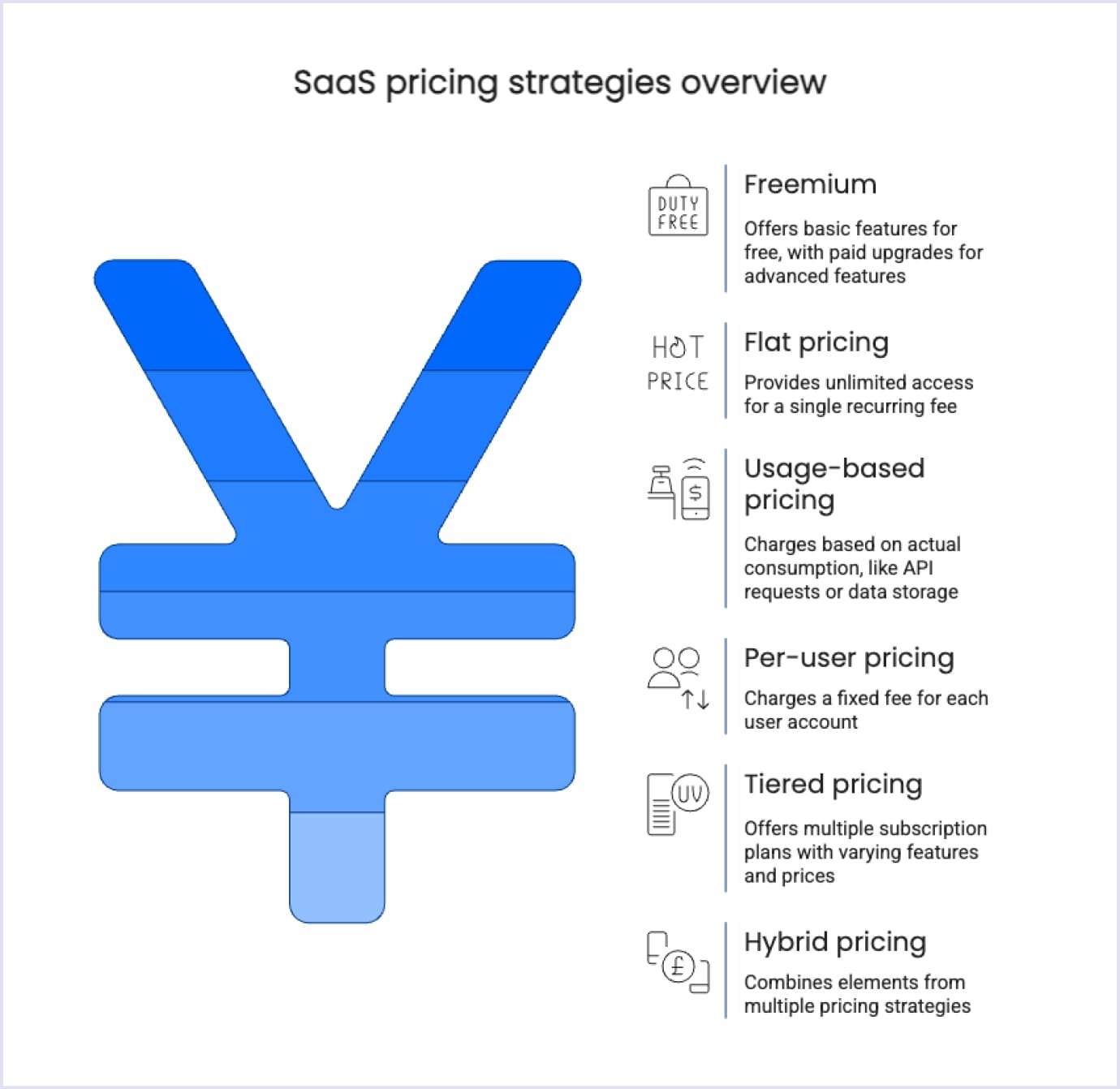
Freemium
The freemium SaaS business model blends “free” and “premium” access, allowing users to start with a no-cost plan that delivers essential functionality.
This entry point builds trust and familiarity with the product, while paid tiers unlock advanced features, integrations, higher limits, or enhanced user experiences such as ad-free interfaces. Popular examples include productivity apps, communication platforms, and design tools, where immediate value can be showcased within minutes of use.
Why it works:
Freemium reduces friction at the adoption stage by removing the cost barrier, letting customers explore the product’s core value before making a financial commitment. It also serves as a powerful lead-generation engine, creating a large pool of engaged users who can be nurtured toward conversion. Over time, this approach fosters loyalty, especially when upgrades directly enhance performance, save time, or improve collaboration.
Best use cases:
- SaaS products that demonstrate clear value within the first use;
- Productivity, collaboration, or creative tools that deliver quick wins;
- Highly competitive markets where free access accelerates adoption and visibility.
Key considerations:
The free plan must be robust enough to attract and retain users, yet strategically limited so that upgrading feels like a natural next step. Paid plans should provide tangible, high-impact benefits that are easy to understand and justify their cost.
Clear upgrade triggers, like reaching usage caps or needing premium features, ensure a smooth transition from free to paid. When designed thoughtfully, the freemium model not only builds a loyal user base but also fuels steady, scalable revenue growth.
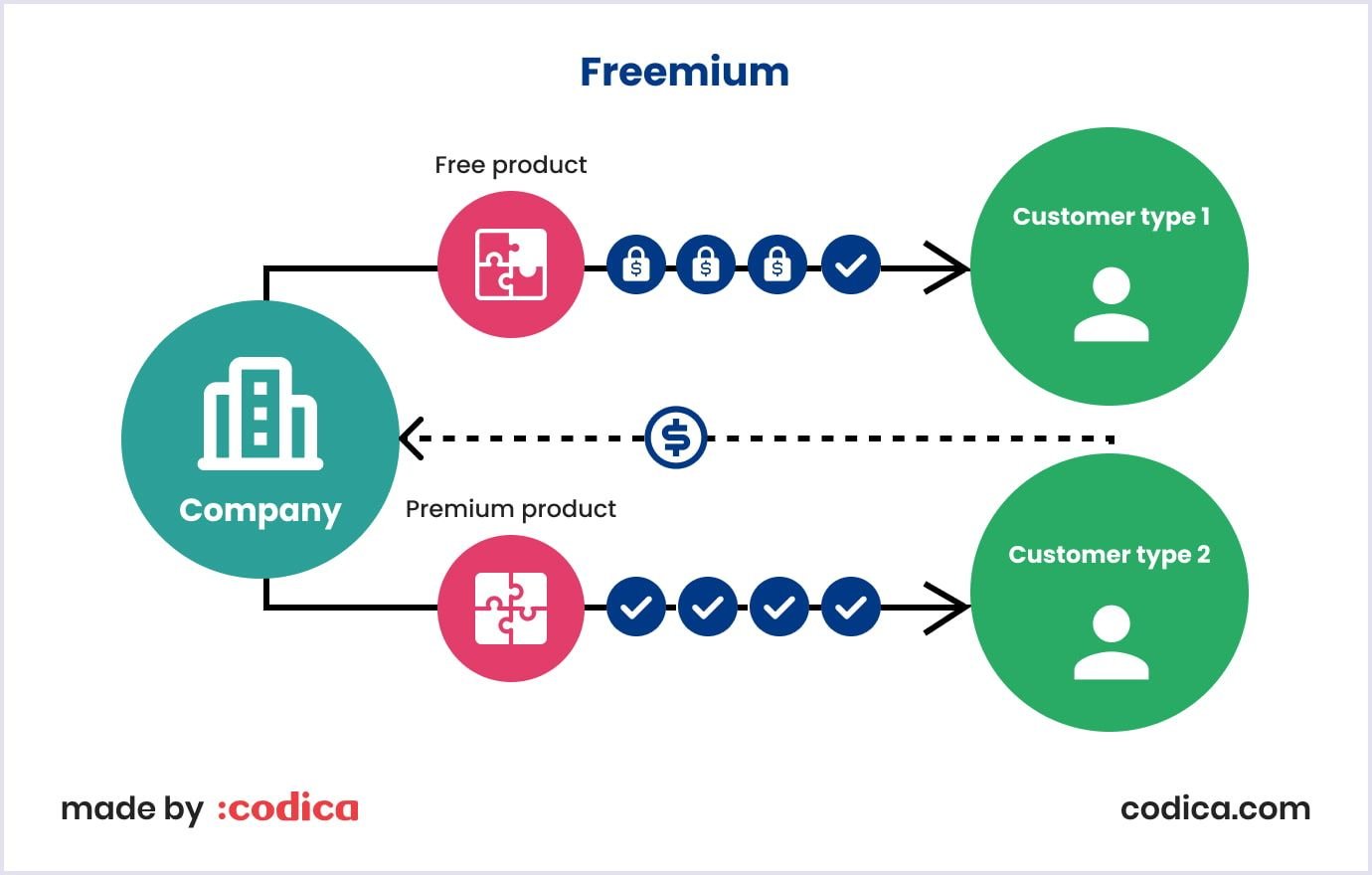
Flat pricing
The flat pricing SaaS business model offers a single recurring fee, monthly or annually, for unlimited access to the software, regardless of the number of users or usage volume.
This “one price for everything” approach simplifies the buying process and builds trust by removing hidden costs or unpredictable overage charges. Well-known examples include project management tools and productivity platforms that offer their full feature set under one transparent subscription.
Why it works:
Flat pricing eliminates the complexity of tiered or usage-based billing, making it easy for customers to calculate ROI and budget for the long term. The predictable cost structure appeals to startups, freelancers, and small businesses that want reliable expenses without worrying about per-seat charges or scaling costs. This simplicity can significantly reduce purchase friction and speed up the sales cycle.
Best use cases:
- SaaS products with a stable, clearly defined feature set;
- Solutions for small businesses, solopreneurs, or teams with consistent usage patterns;
- Platforms where all users derive similar value regardless of activity levels.
Key considerations:
This model works best when the perceived value remains consistently high for every customer segment, regardless of company size or usage frequency. It is less effective for enterprise SaaS platforms or solutions with highly variable resource demands, where usage patterns differ drastically.
When aligned with the right product and audience, flat pricing can boost customer acquisition, improve retention, and foster brand loyalty by keeping costs transparent and easy to manage.
Usage-based pricing
Also called “pay-as-you-go,” the usage-based SaaS pricing model charges customers according to their actual consumption, such as API requests, data storage, bandwidth usage, or transactions processed.
This flexible approach directly ties cost to value, making it especially attractive in industries where demand fluctuates or scaling is gradual. Common examples include cloud infrastructure providers, developer platforms, and data analytics services.
Why it works:
Usage-based pricing aligns the customer’s bill with the tangible value they receive, which builds trust and reduces resistance to adoption. Because users only pay for what they consume, it lowers the initial commitment barrier and encourages gradual scaling. This pricing strategy can also unlock larger lifetime value by allowing high-usage customers to expand naturally without switching providers.
Best use cases:
- Infrastructure-as-a-Service (IaaS) platforms and cloud hosting providers;
- API-based products with measurable calls or transactions;
- Analytics platforms, data processing tools, or services with variable workloads;
- Developer-focused SaaS tools where usage scales with application growth.
Key considerations:
While this model can maximize fairness and attract a broad range of customers, it may lead to unpredictable revenue in the early stages of growth. To succeed, SaaS providers must implement accurate usage tracking, provide transparent reporting, and clearly communicate pricing to avoid bill shock. When executed well, usage-based pricing can foster strong customer loyalty, as clients feel they are paying exactly in proportion to the value they get.
Per-user pricing
The per-user SaaS pricing model charges a fixed fee for each individual user account, usually billed monthly or annually.
It’s one of the most widely used SaaS pricing strategies, especially for tools where value directly increases as more team members join, such as collaboration, project management, or CRM platforms. Because the pricing is tied to the number of active accounts, it scales naturally alongside a customer’s growth.
Why it works:
Per-user pricing is easy for customers to understand, forecast, and budget for, making it a low-friction choice during sales conversations. As client organizations grow, revenue rises in direct proportion to the number of active users, creating predictable and scalable income streams. It also encourages deeper adoption of the software within teams, as more users often lead to higher engagement and retention rates.
Best use cases:
- Collaboration and communication platforms (e.g., Slack, Microsoft Teams);
- Project management software (e.g., Asana, Trello, Jira);
- CRM systems (e.g., Salesforce, HubSpot);
- Productivity and workflow SaaS tools used across departments.
Key considerations:
While predictable, per-user pricing can discourage larger teams from adding new members if costs scale too steeply. It works best when every additional user measurably increases the customer’s overall value from the product. For maximum adoption, pricing tiers should balance affordability with clear feature upgrades, ensuring that scaling headcount feels like a worthwhile investment.
Read also: Exploring the Benefits of SaaS: Innovate, Scale, Succeed
Tiered pricing
The tiered SaaS pricing model offers multiple subscription plans at different price points, with each tier including a defined set of features, usage limits, or service levels. This approach is common among SaaS companies that serve a diverse customer base, from early-stage startups to large enterprises, because it allows them to align pricing with value and cater to varying budgets.
Why it works:
Tiered pricing enables precise market segmentation by offering entry-level plans for cost-sensitive users and higher-tier plans for those needing advanced capabilities. This creates a clear upgrade path and naturally drives upsells as customer requirements expand. By packaging features into logical “bundles,” SaaS providers can make value differences obvious and justify price increases.
Best use cases:
- SaaS platforms with multiple user types and usage needs;
- Tools where advanced functionality or integrations are appealing to power users;
- Solutions that can offer distinct service levels (e.g., basic, professional, enterprise).
Key considerations:
For tiered pricing to work effectively, each level must deliver a tangible increase in value, whether through added features, higher limits, or better support, without overwhelming prospects with too many options.
Overcomplicating tiers can lead to decision fatigue and lost conversions, so the structure should remain simple, clear, and customer-focused.
Hybrid pricing
The hybrid SaaS pricing model combines elements from multiple strategies, such as pairing a flat monthly subscription with usage-based overages, or offering a freemium tier supplemented by paid add-ons and premium upgrades.
This flexible approach allows SaaS providers to capture different customer segments, from light users who only need core features to power users who require advanced tools, integrations, or higher capacity.
Why it works:
Hybrid pricing appeals to a broader audience by blending the predictability of flat or tiered pricing with the scalability of usage-based or add-on models. It maximizes revenue potential by enabling businesses to monetize both baseline usage and premium, high-demand features. This adaptability makes it easier to serve customers with widely varying budgets and requirements while still maintaining profitability.
Best use cases:
- Feature-rich SaaS platforms that offer both essential tools and specialized premium modules;
- Markets with diverse user needs and fluctuating usage patterns;
- Products targeting both small businesses and enterprises within the same ecosystem.
Key considerations:
Clarity in communication is essential, customers must understand exactly what’s included in the base price and what incurs extra charges.
Pricing should be structured so the core offering delivers strong standalone value, while premium options are compelling enough to drive upgrades without creating frustration. When executed correctly, hybrid pricing offers the best of both worlds: predictable recurring revenue and the ability to scale income with customer success.
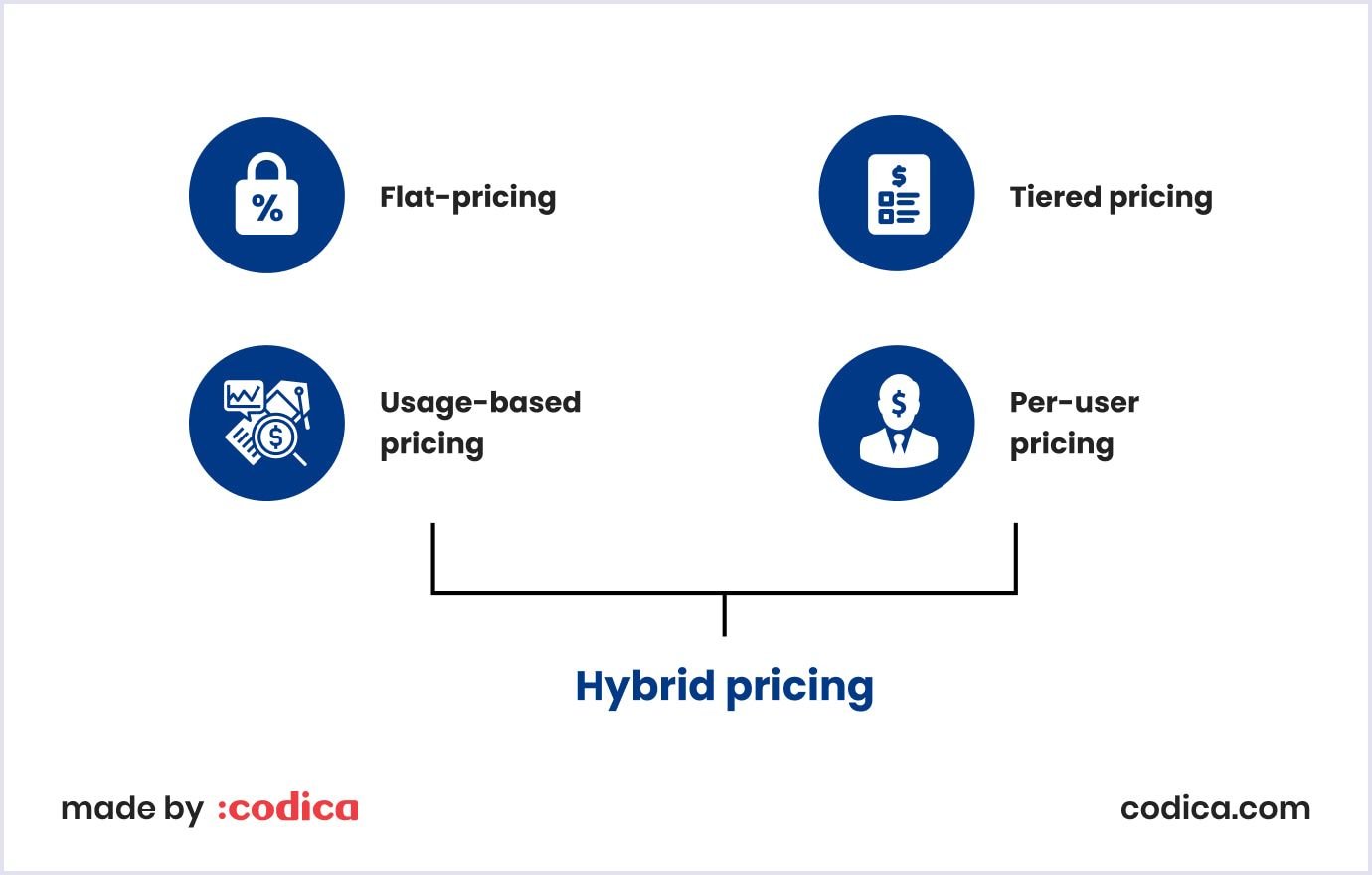
SaaS business model metrics
Tracking SaaS products’ performance is a vital part of the whole business. There are numerous helpful metrics to evaluate different aspects of your app. Some of them are users’ interest, churn percentage, and retention rate. Thus, understanding how to work with them may open new ways for improvement and potential updates.
Lifetime value (LTV)
The lifetime value metric is an essential component of long-term revenue planning. Generally speaking, it calculates the amount of revenue a customer can generate throughout the entire usage time.
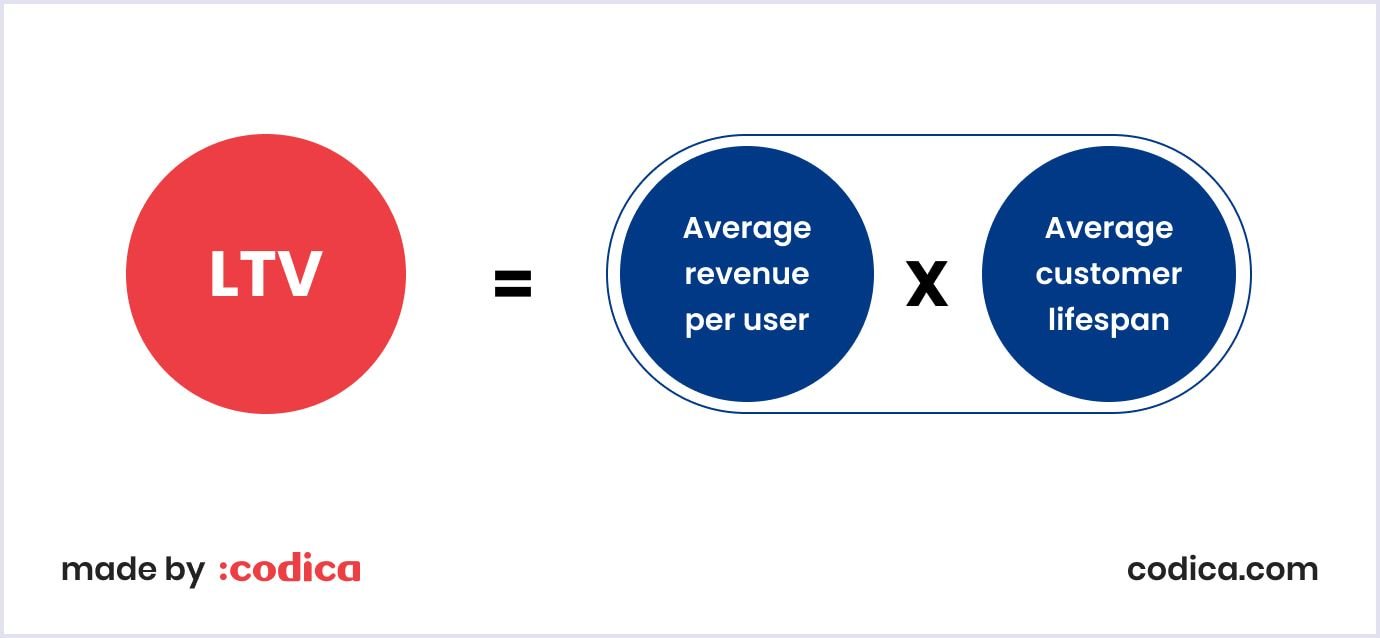
Besides, it works fairly simply. You can calculate LTV by multiplying the average revenue per user (ARPU) by the customer’s average length of time they stay subscribed to the service. Analyzing LTV helps SaaS companies predict customer acquisition costs and compose viable pricing strategies.
Customer acquisition cost (CAC)
This metric calculates the total cost a business incurs to obtain one new customer. Why is there a need for CAC? If the company has an estimate of how much it costs to attract one, then it will be easier to figure out how much investment is required to obtain 1000 new customers. Thus, CAC can easily scale and become a resultative tool with the right analytical approach.
Typically, you can calculate CAC by dividing the total cost of acquiring new customers by the number of new customers acquired during a specified time period. For more understanding, let’s imagine a SaaS business spent $10,000 and acquired 100 new customers over this time period. Thus, the CAC would be $100.
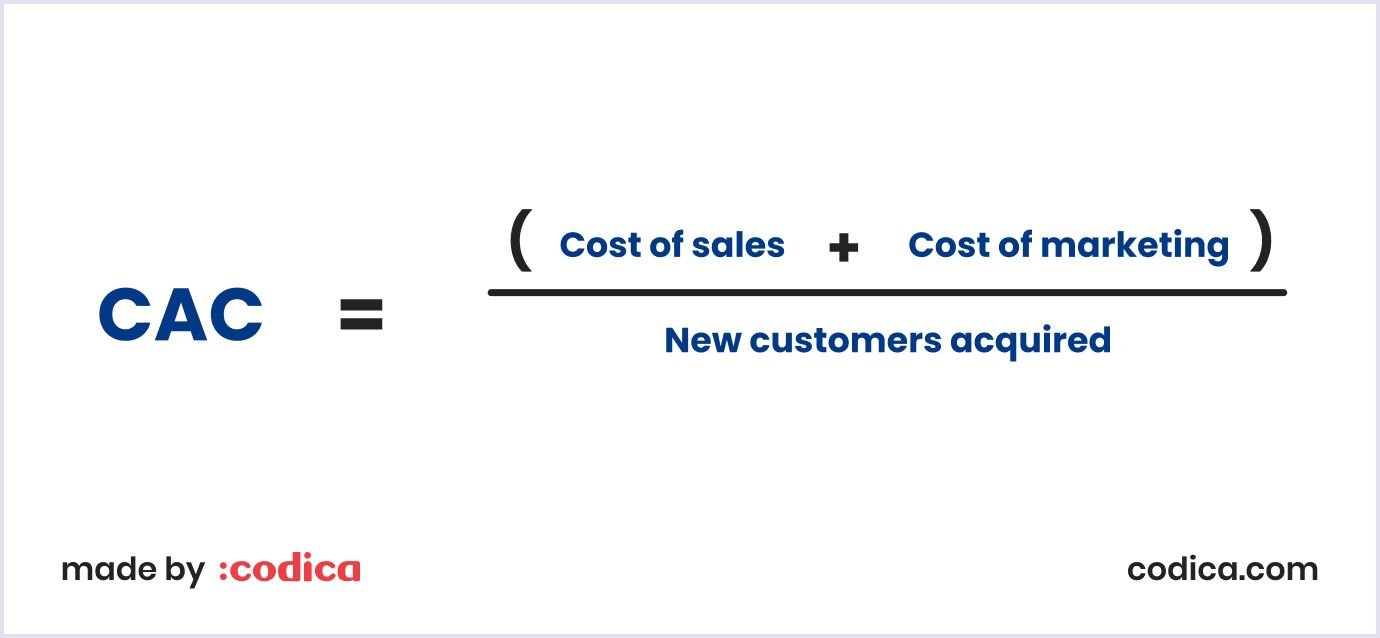
Monthly and annual recurring revenue (MRR and ARR)
MRR and ARR are essential metrics for measuring a SaaS business's performance. MRR stands for the amount of recurring revenue that the company earns on a monthly basis. It is calculated by normalizing your recurring revenue into a monthly amount.
On the other hand, ARR is the annual recurring revenue normalized in a year span. Obviously, ARR is calculated by multiplying MRR by 12.
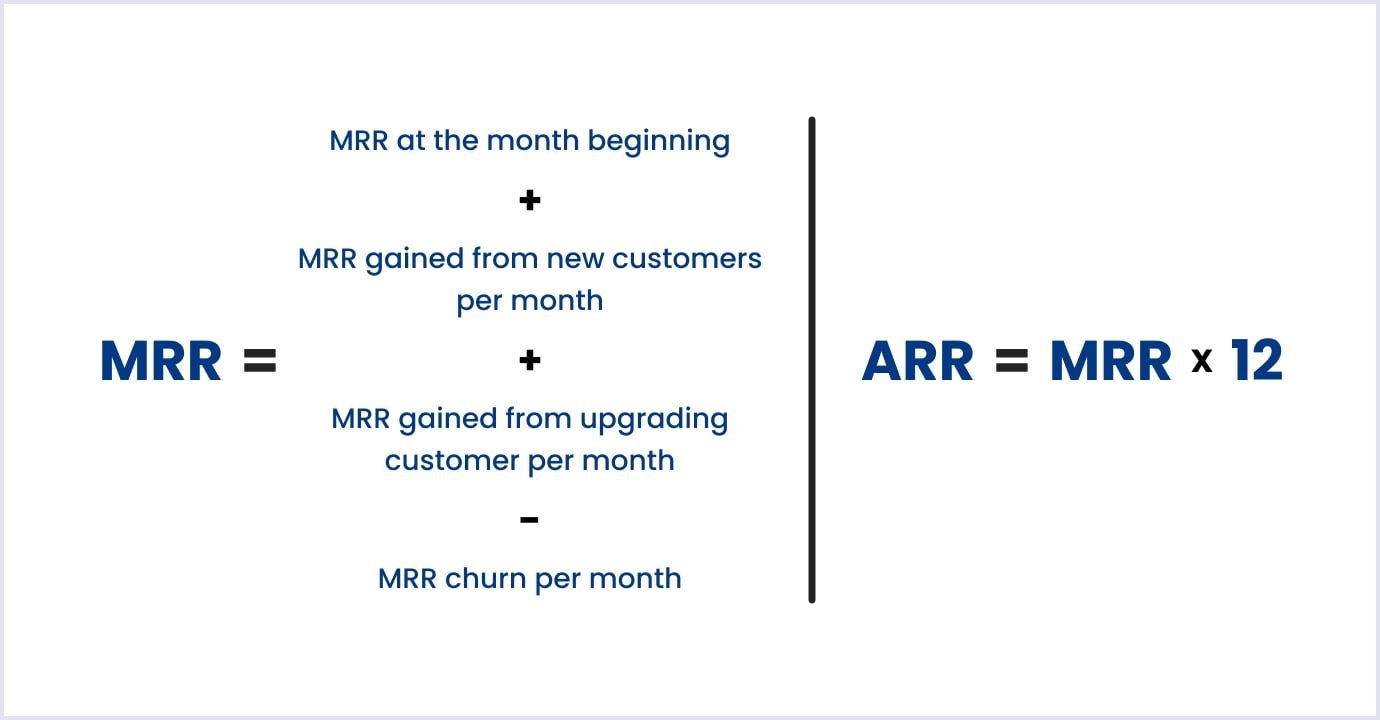
Source: LeadMine
Why is it useful?
Predicting how much your company can generate with the current customer base in a month and a year can significantly simplify the planning process. Moreover, regularly tracking both ARR and MRR can help identify trends and people’s reactions to updates. The latter, in turn, allows you to make data-driven improvements.

Churn rate
This measurement defines the percentage of customers who stop using a service during a period. Churn rate is so far the most popular metric, thanks to its simplicity. For instance, a 10% churn rate occurs when the company has 100 customers and loses 10 of them during the month.
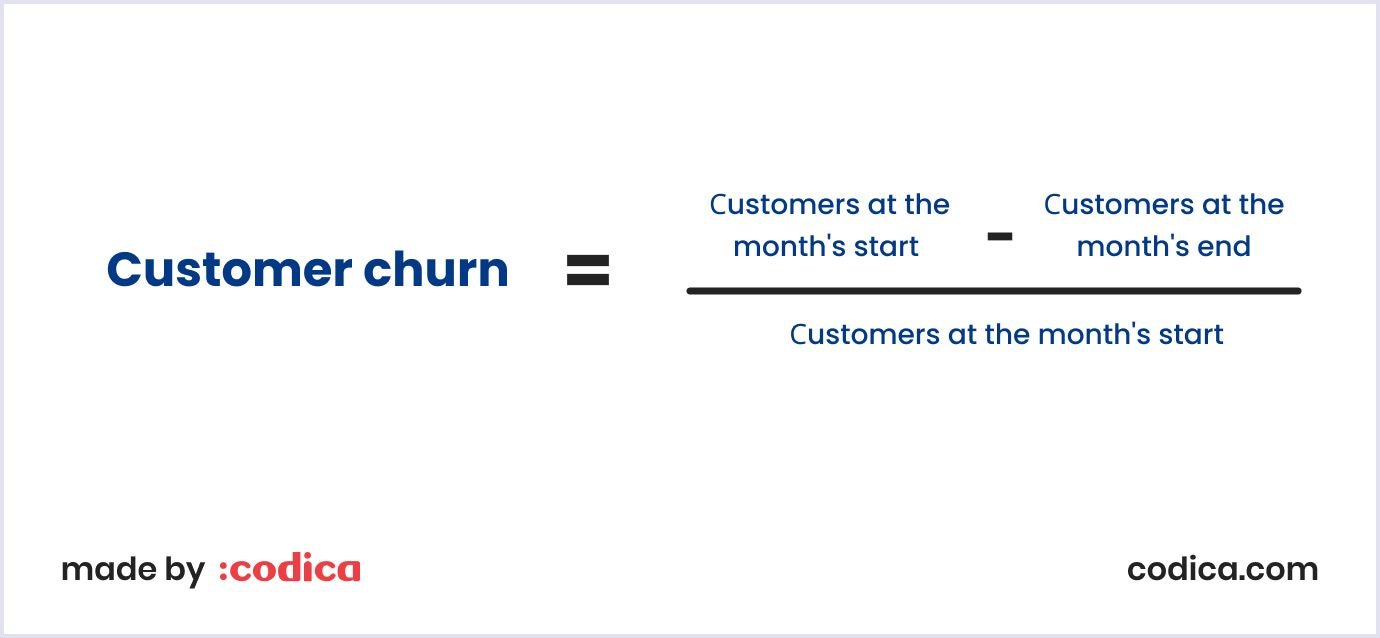
As you can see, each part of the churn rate equation is a variable that can be fed with different numbers and time periods. Thus, its flexibility allows analyzing your customer base's likings and their reaction to the content of your SaaS product.
Besides, it is a fundamental metric to be acknowledged, as the churn rate is one of the most crucial aspects of successful growth.
Related reading: Why SaaS Startups Fail: Most Common Reasons and How to Prevent Them
Retention rate
The exact opposite of the churn rate, the retention rate represents the percentage of users who keep using a product over a given period. Calculating the retention rate is also fairly simple. Normally, analysts define a specific time period, take the total number of users from the beginning of the period, and see how many of them continue to use the product by the end of the chosen period. This metric is especially useful to identify the loyalty and satisfaction of your users.
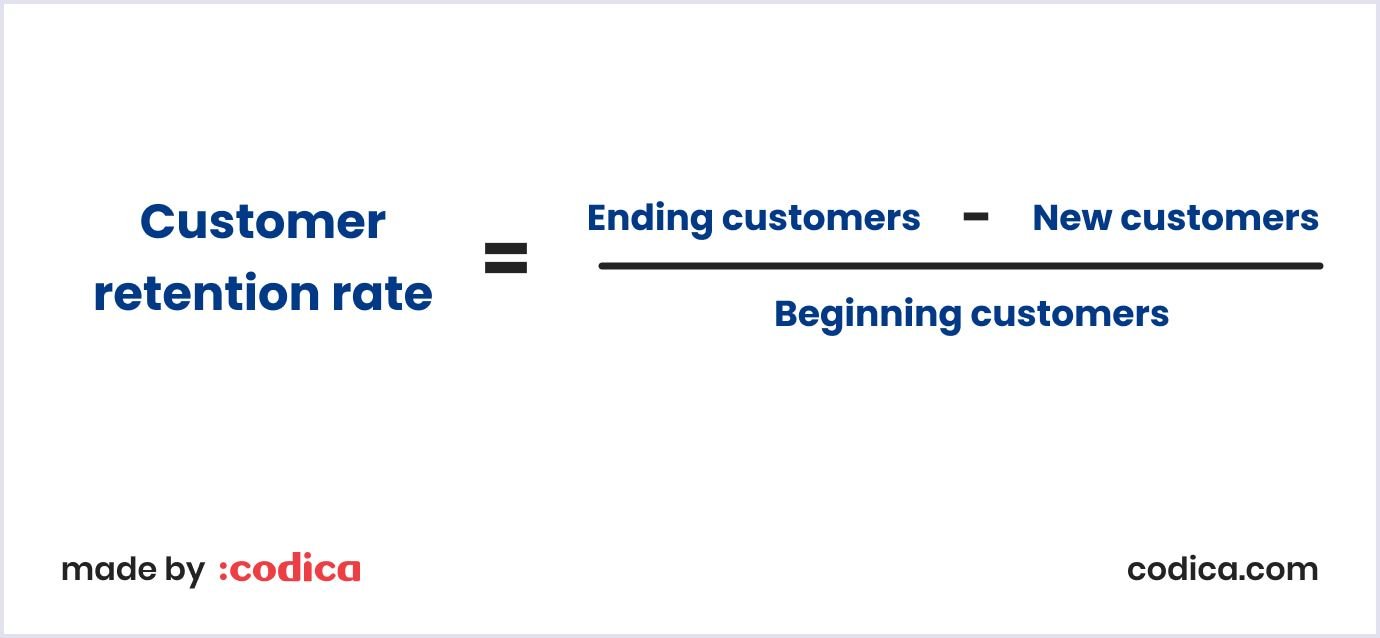
Proper retention rate treatment can do wonders with your startup. It’s an extremely important metric to take advantage of, as it’s very helpful in managing your audience. Besides, it is even more crucial in a SaaS environment because most software solution companies rely highly on their audience.
Understanding the combination of all metrics listed above can seriously improve your startup's progress. Moreover, regular analysis can reveal the lacking points of your product in their forming period. Hence, you will have enough time to eliminate them.
Codica’s expertise
Speaking of the experience with SaaS, we’re no strangers to creating various solutions in this niche. At Codica, we had a chance to work on the SaaS solution to eliminate administration hustle from the creative environment and business relations. Thus, we developed a highly performant and reliable SaaS platform for bakery business.
In our SaaS development services, we adhered to the best development practices, which resulted in catchy UI/UX design, optimized performance, payment security measures, and advanced third-party integrations. Let’s admire a little, shall we?
Regarding the mission of the startups, in cooperation with our client, we decided to stick to a minimalistic approach in business model choice. Hence, we developed two-tiered pricing with two purposes: to give users a choice and not overwhelm them.
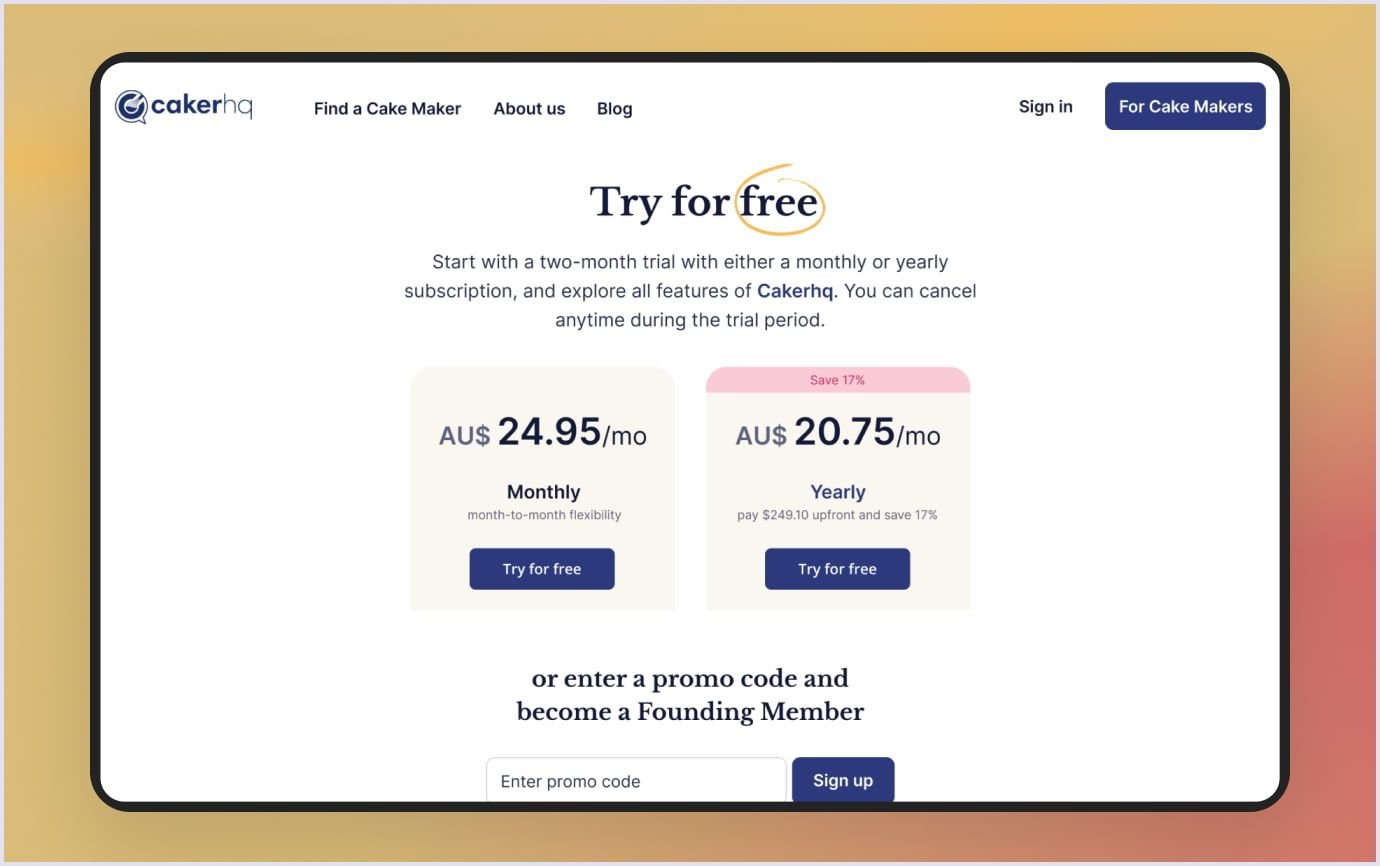
As a result, a combination of a free trial and only two subscription options became a no-brainer and greatly simplified customers’ acquaintance with the platform.
Turning SaaS ideas into market leaders with Codica
Summing everything up, the business model choice for your startup is a very important step. After looking at various types of SaaS business models, helpful metrics, and examples, it is clear that the success of your business highly relies on the monetization you choose. Hence, this step requires thorough planning and analysis to make your way to the market efficiently.
In this matter, Codica is always up to becoming your reliable partner. Over the years, we developed strong expertise in consulting our clients in various fields. Apart from SaaS as a business model, we are keen on building marketplaces, PWA solutions, mobile apps, and MVPs. If you are excited as we are, feel free to check our portfolio.
Finally, if you have an idea to start your SaaS business and shake the market – embrace the challenge. You will have to go from the idea glimpse to a fully operating company on your own. However, entrust this matter to professionals and contact us if there's even the slightest doubt.
